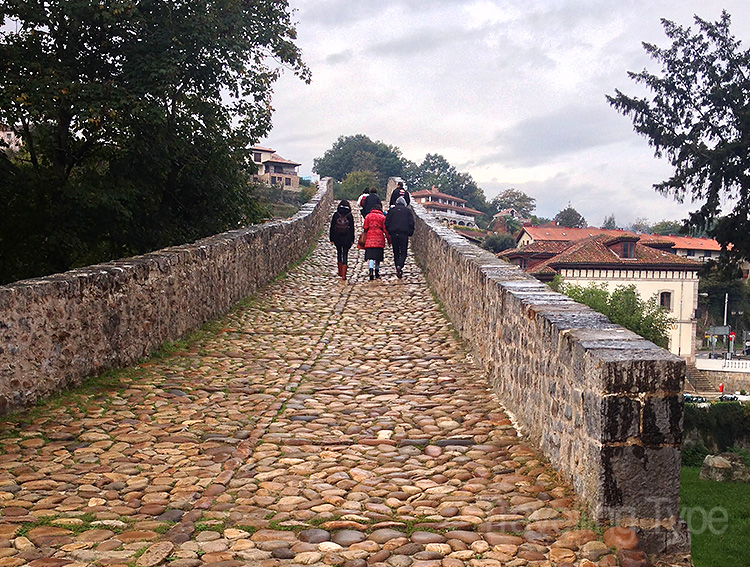It was autumn when I visited the ‘Roman’ bridge in Cangas de Onís, northern Spain. Amber, lime and gold-coloured trees flanked the Sella River, one of the best waterways in Spain for salmon. Layers of mountain silhouettes loomed beyond the trees, while a replica of Spain’s famous Victory Cross hung from the bridge’s centre. Merlin’s beard! I thought to myself, as the scene looked very medieval.
A small tourist town located near the beautiful lakes of Covadonga, Cangas de Onís holds some historical significance for Spain. In 722 (or thereabouts), Don Pelayo established court here after he led the country to victory in the legendary battle against the Moors in Covadonga. The Victory Cross represents the historic event.
The real Victory Cross, however, dates to the 10th century and sits in the Oviedo Cathedral about an hour’s drive to the east. And as remarkable as the bridge looks, it wasn’t until the early 14th century that Alfonso XI of Castile ordered it to be built over an earlier Roman construction. It’s known as the Roman bridge, however the locals call it puente.
While it’s not really a Roman bridge, it too played an important part in Spanish history, as up until the 19th century it was the only stone bridge that crossed the mighty Sella River. It was therefore crucial for communication between Asturias and the neighbouring region of Cantabria, and in 1931 it was declared an historic monument.
Today, as it has for hundreds of years, the bridge welcomes people into Cangas de Onís and the start of their ascent to the lakes. It’s also a superb spot to stop, sit a while and watch the bridge frame the jade-coloured Sella River and the green, mountainous countryside. I imagined lots of salmon swimming blithely along the river, going on many adventures.
You can walk over the puente, as I did, or you can sit beneath it in the riverside cafe and marvel at yet another magical part of Asturias – my favourite region in all of Spain.






Thank you for the photos & history lesson.
Our tour bus stopped near there. Instead of shopping,
my husband and I walked under the bridge, happened upon a restaurant. At that place I was introduced to Sagardoa and favata, it was delicious.
Wonderful time, gracious and welcoming people. Happy memories.